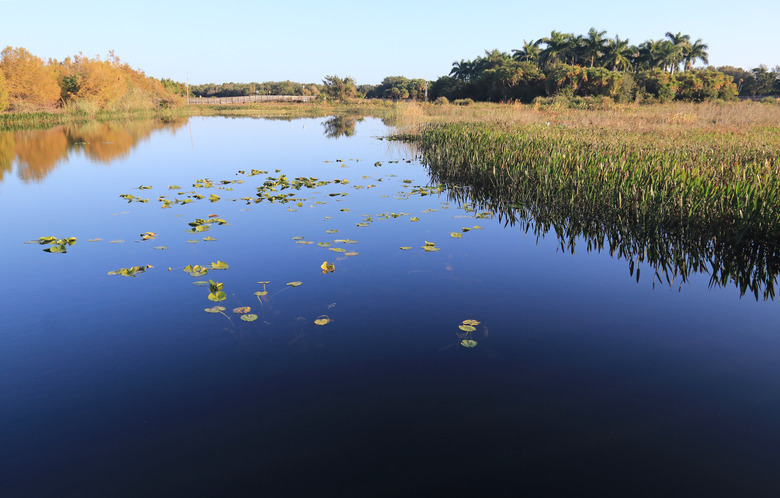Limiting Factors Of The Freshwater Biome
A biome is large regional area of similar communities characterized by a dominant plant type and vegetative structure. Traditionally, biomes have been used to describe large contiguous geographical regions such as deserts, grasslands, forests, and tundras. However, many researchers also include aquatic systems, marine and freshwater. Aquatic systems are characterized by their water temperature, salinity, dissolved nutrients, wave action, currents, depth and substrate. Limiting factors determine the maximum population of a species a given region can maintain.
Freshwater Biomes
Freshwater Biomes
Freshwater biomes include lakes, ponds, rivers, streams and wetlands. Any area partially covered by water for part of the year constitutes a wetland. Some wetlands, such as cyprus swamps, estuaries, and intertidal zones, could be considered separate biomes. While terrestrial biomes are characterized by a dominant plant or vegetative structure, aquatic systems are determined by the salt content, or salinity, of the water. Freshwater contains less than 1 percent salt.
Limiting Factors Generally
Limiting Factors Generally
Limiting factors include any factor that inhibits an increase in population numbers of a species in a given area. A square foot of land or a cubic foot of water can only support so many pounds of an animal. For instance, a pond may be able to support several small alligators, but only one large alligator. Limiting factors determine the carrying capacity of the environment, that is, the maximum population of a species an environment can sustain.
Biotic Limiting Factors
Biotic Limiting Factors
Biotic limiting factors describe the relationship of living organisms to the maximum population size of a species. These factors include the amount of available food, the number of a species' predators, diseases and parasites. As the population of a species nears its carrying capacity, the number of predators, diseases and parasites increases, while the amount of food available to the species decreases.
Abiotic Limiting Factors
Abiotic Limiting Factors
Abiotic limiting factors are factors in the physical world that affect carrying capacity. In the freshwater biomes, limiting factors include:
- salinity
- sunlight
- temperature
- dissolved oxygen
- fertilizers
- pollutants
Fertilizers flow into the system from yards and farms. The fertilizers contribute to algae growth, the algae remove the dissolved oxygen from the water, and the fish die. In this case, the fertilizer indirectly limits the amount of oxygen available, thus limiting the fish population.
References
- "Environment"; Jay Withgott and Scott Brennan; 2006
- University of California Museum of Paleontology: The World's Biomes
- University of California Museum of Paleontology: The Freshwater Biome
- NCHS Biology Lounge: Limiting Factors and Carrying Capacity
Cite This Article
MLA
Smith, Bruce. "Limiting Factors Of The Freshwater Biome" sciencing.com, https://www.sciencing.com/limiting-factors-freshwater-biome-8210453/. 22 November 2019.
APA
Smith, Bruce. (2019, November 22). Limiting Factors Of The Freshwater Biome. sciencing.com. Retrieved from https://www.sciencing.com/limiting-factors-freshwater-biome-8210453/
Chicago
Smith, Bruce. Limiting Factors Of The Freshwater Biome last modified March 24, 2022. https://www.sciencing.com/limiting-factors-freshwater-biome-8210453/
